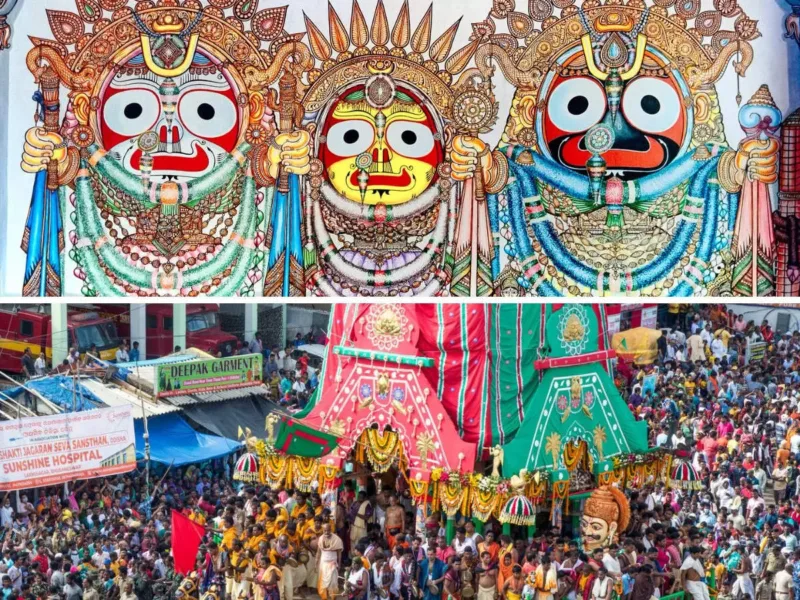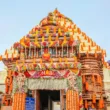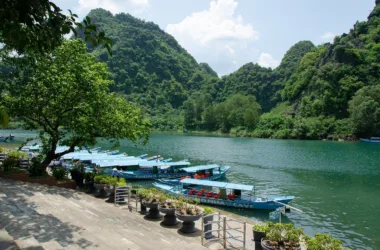The Jagannath Rath Yatra is a grand Hindu festival that celebrates the journey of Lord Jagannath, his elder brother Lord Balabhadra, and their sister, Goddess Subhadra, from the Puri Jagannath Temple to the Gundicha Temple and back. This annual event is a spectacle of faith, devotion, and cultural heritage, attracting millions of devotees and tourists from around the world.
Introduction to Jagannath Rath Yatra
History of the Festival
Jagannath Rath Yatra, also known as the Chariot Festival, has a rich history that dates back to ancient times. The festival is believed to have originated in the 12th century when King Anantavarman Chodaganga Dev, the founder of the Ganga dynasty, built the Puri Jagannath Temple and initiated the Rath Yatra.
Significance and Meaning
The festival holds immense religious significance for Hindus and is celebrated with great enthusiasm and devotion. The event symbolizes the journey of the deities from their celestial abode to their aunt’s house, the Gundicha Temple, where they stay for nine days before returning to the main temple. This journey represents the human desire to seek divine blessings and spiritual fulfillment.
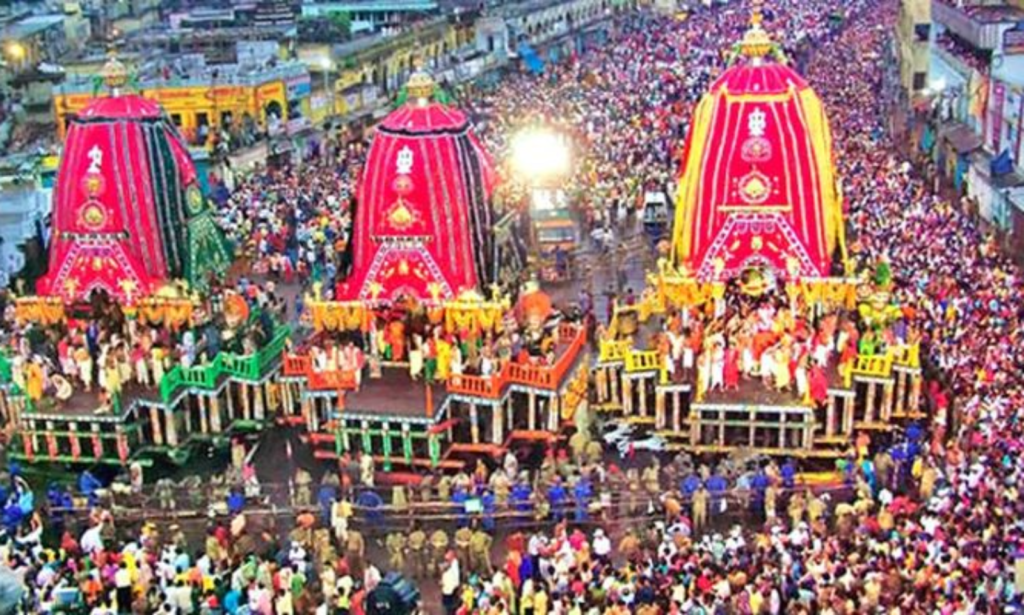
The Grand Celebration of Rath Yatra
Preparations and Rituals
The Rath Yatra is celebrated with much fanfare and elaborate preparations. The deities are bathed and adorned with new clothes and jewelry during the Snana Purnima ceremony. This is followed by the Anasara period, during which the deities remain in isolation to recover from the bathing ritual.
The Chariot Procession
The highlight of the festival is the grand chariot procession. Three massive chariots, each dedicated to one of the deities, are pulled by thousands of devotees using thick ropes. The chariots are beautifully decorated with intricate carvings, colorful fabrics, and flowers. The journey from the Puri Jagannath Temple to the Gundicha Temple is a spectacle of devotion and fervor.
The Deities of Jagannath Rath Yatra
Lord Jagannath
Lord Jagannath, the principal deity of the Puri Jagannath Temple, is considered a form of Lord Vishnu. He is worshipped as the Lord of the Universe and is depicted with large, round eyes and a smiling face.
Lord Balabhadra and Goddess Subhadra
Lord Balabhadra, the elder brother of Lord Jagannath, is a form of Lord Vishnu’s avatar, Balarama. Goddess Subhadra, the sister of the two brothers, is considered a form of the goddess Durga. Together, they form a divine trinity worshipped with great reverence in Puri.
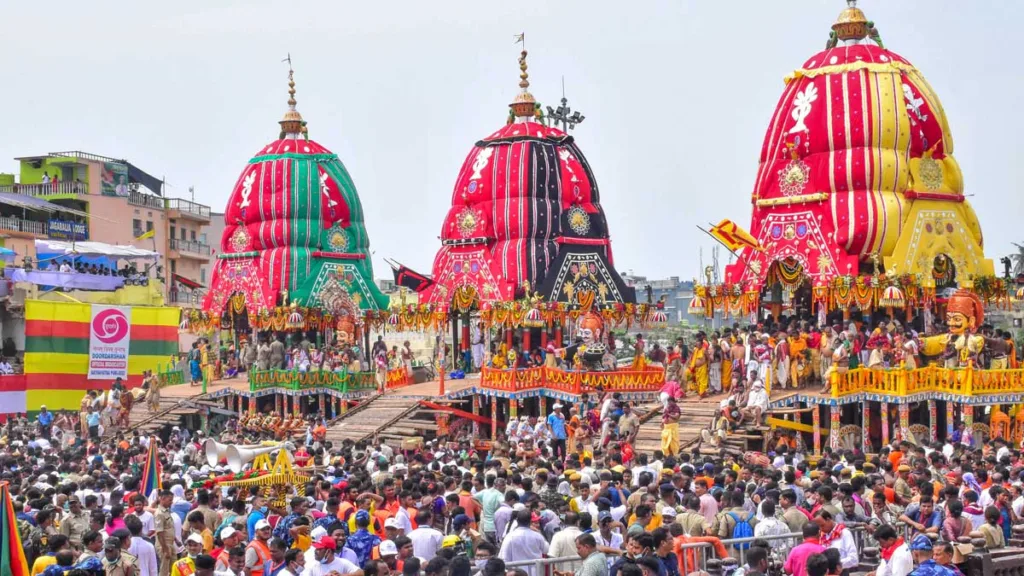
The Rath Yatra Route
Puri to Gundicha Temple
The Rath Yatra begins at the Puri Jagannath Temple, where the deities are placed on their respective chariots. The procession moves through the Grand Road, known as the Bada Danda, towards the Gundicha Temple, located approximately 3 km away.
Return Journey to Puri
After spending nine days at the Gundicha Temple, the deities are brought back to the Puri Jagannath Temple in a similar grand procession known as the Bahuda Yatra. This return journey marks the conclusion of the Rath Yatra festival.
Cultural Significance of Rath Yatra
Influence on Art and Music
The Rath Yatra has had a profound impact on the art and music of Odisha and India as a whole. The festival has inspired various art forms, including paintings, sculptures, and traditional dance forms such as Odissi.
Regional Celebrations
While the Rath Yatra in Puri is the most famous, the festival is celebrated in various parts of India with regional variations. In cities like Ahmedabad, Kolkata, and Hyderabad, the Rath Yatra is celebrated with equal fervor and enthusiasm.
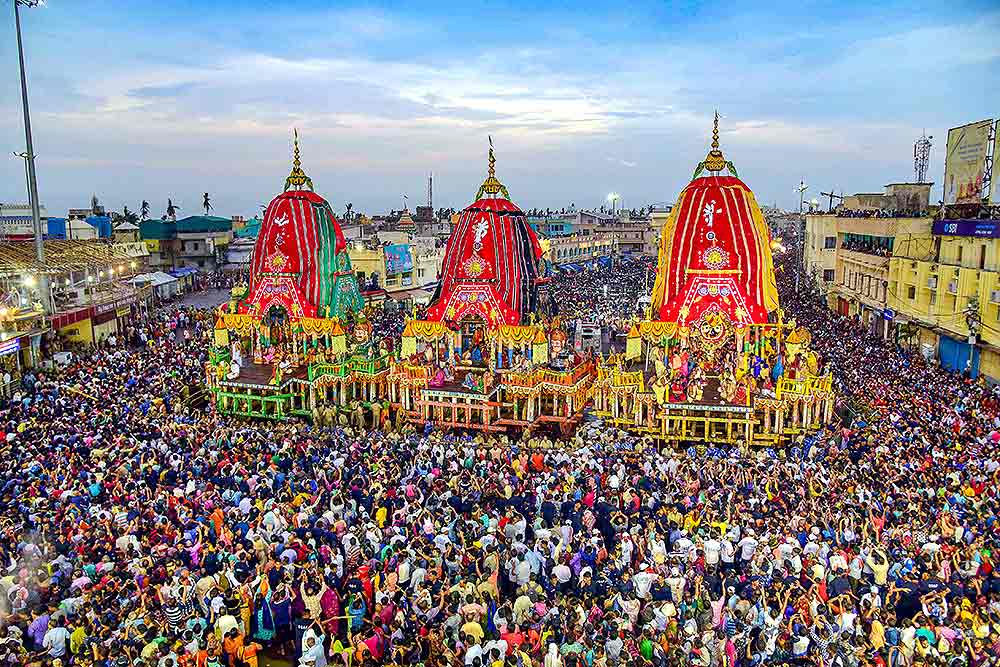
The Culinary Delights of Rath Yatra
Prasadam Offerings
The Rath Yatra is known for its delicious prasadam offerings. The Mahaprasad, which is offered to the deities and later distributed to the devotees, includes a variety of traditional dishes prepared with utmost devotion and sanctity.
Traditional Dishes
Some of the popular traditional dishes offered during the Rath Yatra include Khichdi, Dalma, Pithas, and Chhena Poda. These dishes are not only delicious but also hold religious significance and are an integral part of the festival’s culinary delights.
The International Appeal of Rath Yatra
Rath Yatra Festivals Worldwide
The Rath Yatra has gained international acclaim and is celebrated in various countries around the world. The festival is particularly popular among the Indian diaspora and followers of the International Society for Krishna Consciousness (ISKCON).
Global Devotees and Followers
The Rath Yatra attracts devotees and tourists from across the globe. People from different cultures and backgrounds come together to witness and participate in this grand celebration of faith and devotion.
The Colorful and Vibrant Costumes
Traditional Attires of the Deities
The deities are adorned with colorful and vibrant costumes during the Rath Yatra. These traditional attires are meticulously crafted and reflect the rich cultural heritage of Odisha.
Costumes of the Priests and Devotees
The priests and devotees also dress up in traditional attire during the Rath Yatra. The men wear dhotis and kurtas, while the women wear sarees and traditional jewelry, adding to the festive atmosphere.
Rath Yatra and the Puri Jagannath Temple
History and Architecture of the Temple
The Puri Jagannath Temple is an architectural marvel and one of the Char Dham pilgrimage sites. The temple’s history dates back to the 12th century, and its grand structure is a testament to the skill and craftsmanship of the ancient builders.
Significance of the Temple in Rath Yatra
The Puri Jagannath Temple is the epicenter of the Rath Yatra. The festival is centered around the deities of the temple, and the entire celebration revolves around their journey from the temple to the Gundicha Temple and back.
The Spiritual Experience of Rath Yatra
Devotee Participation
The Rath Yatra is a spiritual experience that transcends religious boundaries. Devotees from all walks of life participate in the festival with great fervor and devotion, seeking blessings and spiritual fulfillment.
Spiritual Significance of the Festival
The Rath Yatra is considered a journey of the soul towards spiritual awakening and liberation. It is believed that pulling the chariots of the deities can cleanse the soul and bring one closer to divinity.
Challenges and Controversies Surrounding Rath Yatra
Security and Crowd Management
The Rath Yatra attracts millions of devotees and tourists, making crowd management and security a significant challenge. Ensuring the safety and well-being of the participants is a top priority for the organizers and authorities.
Controversies and Criticisms
The Rath Yatra has faced its share of controversies and criticisms over the years. Issues related to environmental concerns, animal rights, and social inclusivity have sparked debates and discussions.
The Legacy and Future of Rath Yatra
Preservation and Promotion
The Rath Yatra is an integral part of India’s cultural heritage. Efforts are being made to preserve and promote the festival through various initiatives, including the inclusion of the Rath Yatra in UNESCO’s Representative List of the Intangible Cultural Heritage of Humanity.
Future Prospects and Initiatives
The future of the Rath Yatra looks promising, with plans to further enhance the festival’s global appeal and participation. Initiatives are underway to make the festival more accessible and inclusive for people from all walks of life.
Conclusion
The Jagannath Rath Yatra is a celebration of faith, devotion, and cultural heritage that transcends boundaries and unites people from all walks of life. It is a testament to the rich and vibrant traditions of India and a symbol of the universal quest for spiritual fulfillment. As we witness and participate in this grand celebration, let us embrace the spirit of unity, love, and devotion that defines the Rath Yatra.
Similar Articles
FAQs
What is the Jagannath Rath Yatra?
The Jagannath Rath Yatra is an annual Hindu festival that celebrates the journey of Lord Jagannath, his elder brother Lord Balabhadra, and their sister, Goddess Subhadra, from the Puri Jagannath Temple to the Gundicha Temple and back.
When is the Rath Yatra celebrated?
The Rath Yatra is celebrated annually in the month of June or July, depending on the lunar calendar.
Where is the Rath Yatra held?
The Rath Yatra is held in Puri, Odisha, and is also celebrated in various parts of India and around the world.
Who are the main deities of the Rath Yatra?
The main deities of the Rath Yatra are Lord Jagannath, Lord Balabhadra, and Goddess Subhadra.
What is the significance of the Rath Yatra?
The Rath Yatra holds immense religious significance for Hindus and is celebrated with great enthusiasm and devotion. The festival symbolizes the journey of the deities from their celestial abode to their aunt’s house, the Gundicha Temple, and represents the human desire for divine blessings and spiritual fulfillment.
How are the chariots for the Rath Yatra constructed?
The chariots for the Rath Yatra are constructed using wood and are beautifully decorated with intricate carvings, colorful fabrics, and flowers. The construction of the chariots is an elaborate process and is carried out by skilled artisans.
What is the significance of the chariots used in the Rath Yatra?
The chariots used in the Rath Yatra are considered to be divine and are a representation of the celestial chariots of the deities. The chariots are believed to have spiritual significance and are an integral part of the festival.
How many chariots are used in the Rath Yatra procession?
Three chariots are used in the Rath Yatra procession, one for each of the deities – Lord Jagannath, Lord Balabhadra, and Goddess Subhadra.
Who is allowed to pull the chariots during the Rath Yatra procession?
The chariots are traditionally pulled by the devotees using thick ropes. The act of pulling the chariots is considered to be a form of devotion and is believed to bring spiritual benefits.
What other rituals and ceremonies are associated with the Rath Yatra?
The Rath Yatra is associated with several rituals and ceremonies, including the Snana Purnima ceremony, during which the deities are bathed, and the Anasara period, during which the deities remain in isolation. The festival also includes the Bahuda Yatra, which is the return journey of the deities to the Puri Jagannath Temple.
What happened during the Bahuda Yatra?
During the Bahuda Yatra, the deities are brought back to the Puri Jagannath Temple in a grand procession. The return journey marks the conclusion of the Rath Yatra festival.
How long does the Rath Yatra festival last?
The Rath Yatra festival lasts for around 10 to 12 days, including the Snana Purnima ceremony, the Anasara period, the chariot procession, and the Bahuda Yatra.
How can I participate in the Rath Yatra?
Devotees can participate in the Rath Yatra by attending the festivities, pulling the chariots, and offering prayers and offerings to the deities. The festival is open to people of all religions and backgrounds.
What are some of the traditional dishes offered during the Rath Yatra?
Some of the popular traditional dishes offered during the Rath Yatra include Khichdi, Dalma, Pithas, and Chhena Poda. These dishes are not only delicious but also hold religious significance and are an integral part of the festival’s culinary delights.
What is the international appeal of the Rath Yatra?
The Rath Yatra has gained international acclaim and is celebrated in various countries around the world. The festival is particularly popular among the Indian diaspora and followers of the International Society for Krishna Consciousness (ISKCON).




